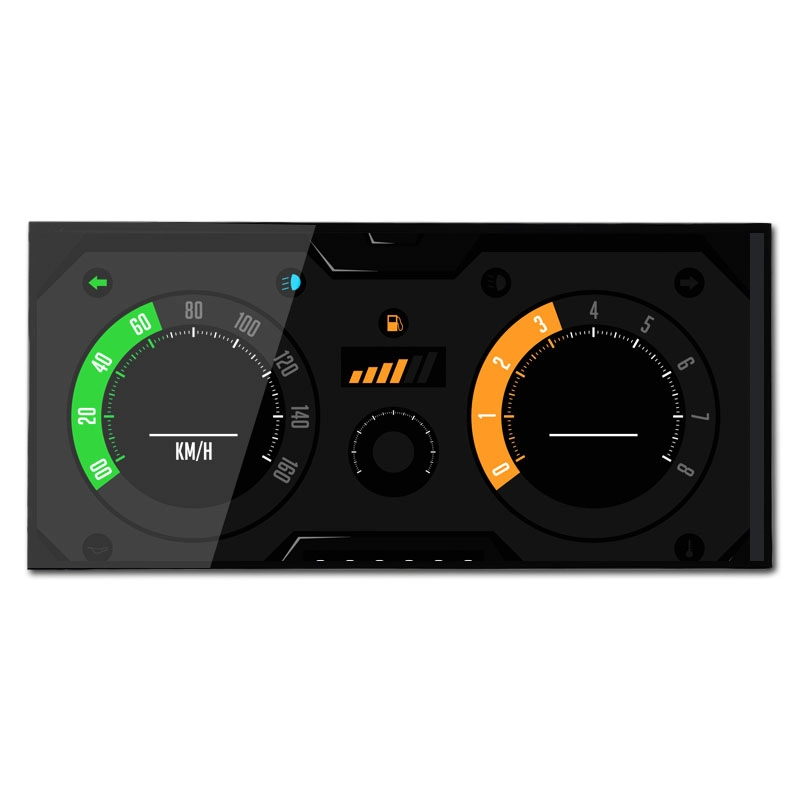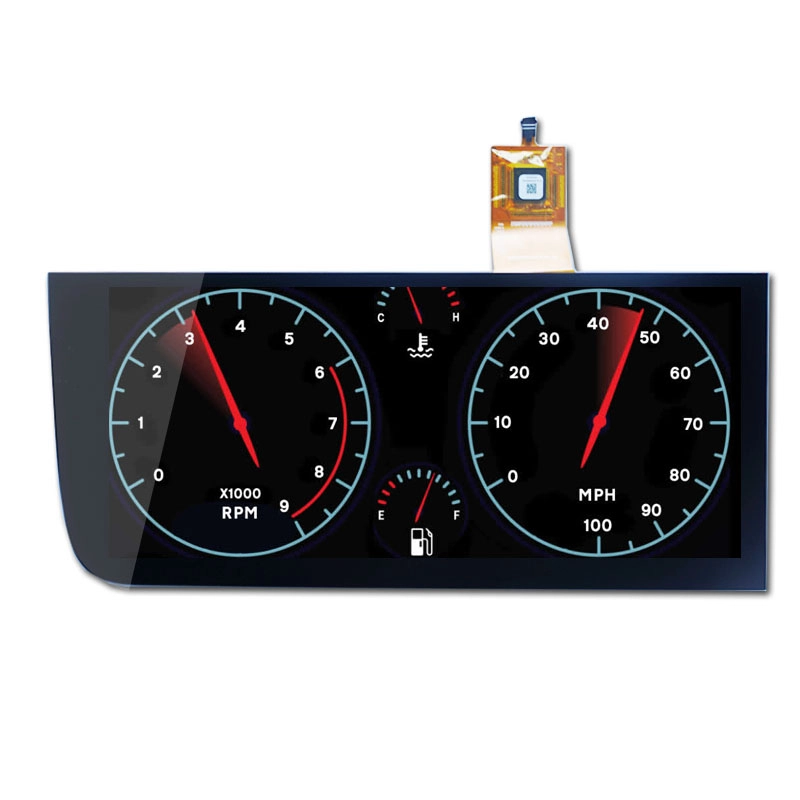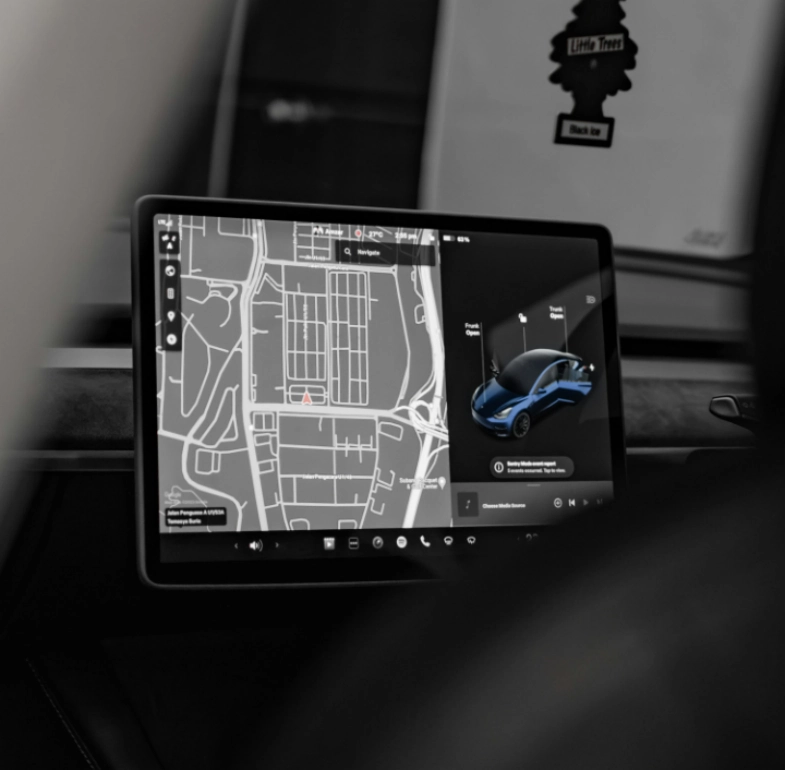The Rise of TFT LCD Technology in Modern Vehicles
From Analog to Digital: A Brief History of Automotive Displays
The development of automotive TFT LCD displays has been extraordinary. Previously, cars featured basic analog gauges that showed essential details such as velocity and fuel amounts. But as technology progressed, the sector shifted toward digital panels. This change improved both appearance and utility.
The arrival of TFT LCD touchscreen displays was a major milestone. They allowed instant data presentation, responsive controls, and smooth integration. Over time, vehicle makers adopted these vivid screens widely. They incorporated them into entertainment setups, control panels, and even back-seat amusement systems. The broad use of TFT LCD displays has transformed how motorists and travelers engage with their cars.
Why TFT LCD Displays Dominate Automotive Innovation
TFT LCD technology provides numerous benefits compared to older display techniques. These screens deliver excellent picture clarity with sharper resolution. As a result, they ensure striking visuals regardless of light conditions. Moreover, they consume less power, which suits electric and hybrid cars perfectly.

A primary advantage of automotive TFT LCD displays is their support for advanced driver-assistance systems (ADAS). These setups depend on clear screens to show directions, lane exit alerts, and live traffic reports. This greatly boosts driving security. As car producers keep pushing innovation limits, the need for top-notch automotive-grade TFT LCD screens grows steadily.
Key Features of Automotive-Grade TFT LCD Displays
Wide-Temperature Tolerance and Sunlight Readability
Automotive-grade TFT LCD screens are crafted to work dependably in tough situations. Unlike typical home screens that falter in extreme heat or cold, these robust screens perform well from -30°C to 85°C. This toughness keeps car displays functional during icy winters and blazing summers alike. Another vital trait is their visibility in sunlight. High-brightness TFT LCD module displays often surpass 1000 nits. This enhances sight in bright daylight. Anti-glare layers also improve clarity by cutting down reflections that might divert drivers.
Enhanced Durability for Harsh Environments
Cars regularly face shaking, dirt, and dampness, all of which can harm electronic parts. To tackle this, automotive TFT LCD displays use strengthened materials to endure severe settings. These screens often have IP-rated seals to block water and dust entry. Their sturdiness ensures that key vehicle info stays available no matter the landscape or weather.
Seamless Touchscreen Integration
Today’s cars focus on user satisfaction, and touchscreens are central to creating easy-to-use controls. TFT LCD touchscreen displays employ either capacitive or resistive touch methods. Capacitive screens respond quickly and support multi-touch actions. They’re popular in entertainment systems. Meanwhile, resistive screens offer greater toughness, fitting them for rough uses like off-road cars. By adding these screens to dashboards, makers improve driver ease and cut down on physical switches.

Applications Driving Automotive TFT LCD Adoption
Central Infotainment Consoles: The New Control Hub
The infotainment console stands out as a key use of automotive TFT LCD touch screens. These displays act as the main hub for navigation, music, and car adjustments. Car companies are testing various designs. For instance, Tesla uses a tall screen layout, while BMW opts for wide ones. These setups aim to boost user reach and enhance driving comfort overall.
Digital Instrument Clusters: Replacing Analog Gauges
Old-style analog gauges are giving way to fully digital instrument clusters, thanks to progress in custom TFT LCD displays. These digital panels show live details on speed, fuel use, and battery levels in electric cars. A big plus of digital clusters is personalization. Drivers can tweak their view to match their tastes. Safety also improves, as urgent notices and alerts appear clearly.
Heads-Up Displays (HUDs) and Rear-Seat Entertainment
Heads-up displays (HUDs) are growing vital in new cars. They give drivers key info without forcing them to look away from the road. High-contrast TFT LCD modules boost HUD clarity. This ensures speed limits, navigation cues, and safety warnings stay visible. Plus, rear-seat entertainment systems use automotive TFT LCD displays to offer passengers sharp visuals for films, games, and streaming. This makes long trips more pleasant.
Challenges and Solutions in Automotive Display Integration
Balancing Performance with Power Consumption
A hurdle in adding TFT LCD screens to cars is handling energy use. Sharp, vivid displays demand considerable power, which can lower electric vehicle efficiency. To fix this, makers refine backlight performance and apply adaptive brightness settings. These steps keep screens clear without draining too much energy.
Designing for Aesthetics and Functionality
Modern cars highlight sleek, forward-looking interiors. Display design is critical to this goal. Carmakers are using curved and edge-free TFT LCD touchscreens. These create a smooth, eye-catching cockpit. Yet, fitting them in requires solving electromagnetic interference (EMI) problems that might disrupt other electronics. Engineers apply shielding methods to maintain steady operation.
Meeting Automotive Safety Standards
Automotive displays must meet strict safety rules, like ISO 26262 and AEC-Q100 standards. These rules confirm that automotive-grade TFT LCD screens hit reliability and performance targets. By following these guidelines, makers ensure their displays are safe and long-lasting, giving drivers a trustworthy interface.
Future Trends: Where TFT LCD Technology is Heading
Flexible and Transparent Displays
The next step for TFT LCD displays includes bendable and see-through screens. These new ideas are set to transform car dashboards. They’ll enable augmented reality setups and advanced HUD uses.
AI-Driven Adaptive Interfaces
Artificial intelligence is taking a bigger role in car displays. AI-powered adaptive interfaces tweak screen content based on driver actions. They improve navigation tips and safety alerts instantly.
Sustainability in Display Manufacturing
As eco-worries grow, display makers are eyeing sustainability. Using recyclable items and energy-saving production ways is now a focus. This cuts the environmental toll of making car displays.
Displaysell’s Role in Automotive Display Innovation
Displaysell excels in custom LCD solutions for car uses. We offer high-performing custom TFT LCD displays with wide-temperature function, sunlight readability, and tough builds. Our skills cover medical, industrial, and automotive fields. We deliver finely crafted displays for infotainment, digital clusters, and HUDs. With clients worldwide and fast 48-hour prototyping, we turn ideas into dependable, advanced displays. Learn more about our automotive-grade solutions here.
FAQs About TFT LCD Displays in Automotive Applications
How do automotive-grade TFT LCD displays differ from consumer-grade screens?
Automotive screens have a broader temperature range, greater toughness, and meet industry standards.
Can TFT LCD touchscreens withstand extreme vibrations in off-road vehicles?
Yes, they feature reinforced builds and shake-proof materials for reliability.
What makes sunlight-readable displays critical for automotive safety?
Anti-reflective layers and bright levels boost visibility, reducing driver distraction.
Are custom TFT LCD displays cost-effective for niche vehicle models?
Yes, flexible production and modular builds allow affordable tailoring.
Conclusion: Accelerating Innovation with Smarter Displays
TFT LCD technology is reshaping the automotive world. It boosts driver safety, ease, and style. As innovation rolls on, these displays will take an even larger role in car design and function.
Ready to upgrade your automotive interface? Check out Displaysell’s custom TFT LCD displays built for next-gen cars. Contact our team today to talk about your project needs.
